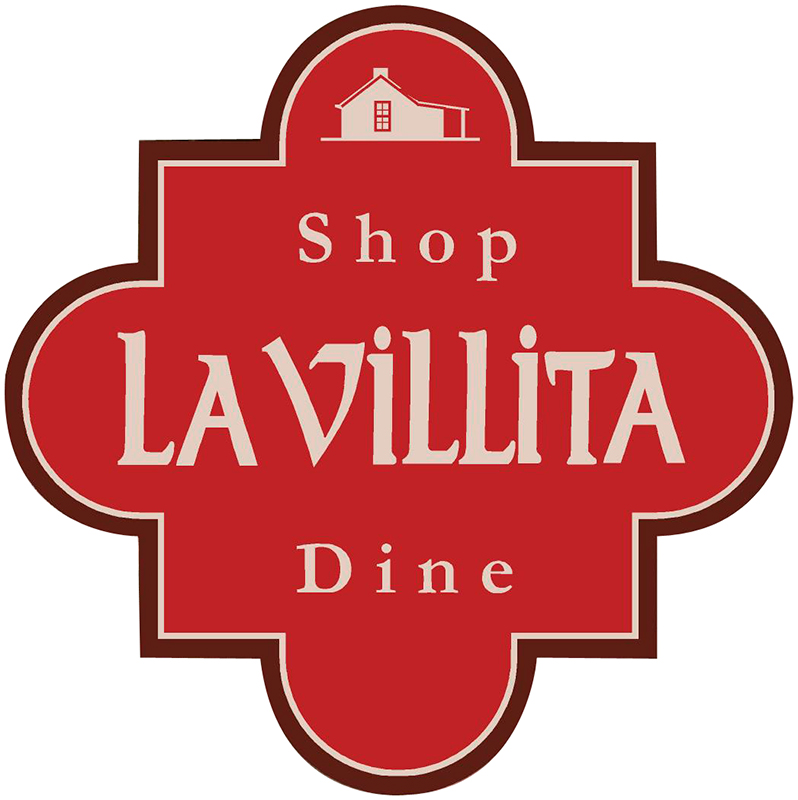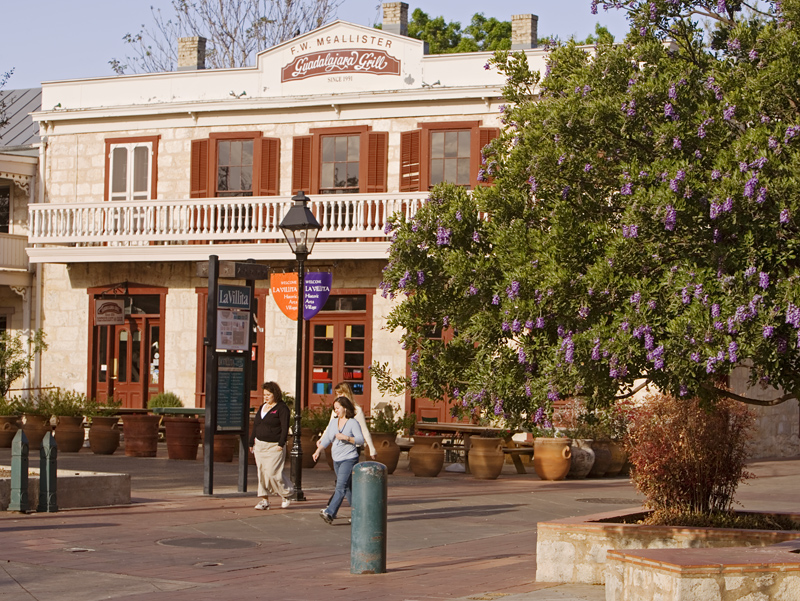< San Antonio & Austin's Top 10
 La Villita Historic District
La Villita Historic District

Arts Village sign
San Antonio’s first neighborhood offers great shopping, fine dining, and fascinating history. The district was once a military post where families of Spanish soldiers lived in simple adobe huts. The neighborhood became desirable after the 1819 flood destroyed many prominent citizens’ homes. European immigrants settled here in the mid-1800s, and today artisans, shops, and restaurants occupy the restored structures.
Top 10 Features
 The Little Church
The Little Church
This tiny Gothic Revival church with a beautiful stained-glass window was built in 1879 using stone blocks from a quarry in Brackenridge Park. Services were held at this non-denominational church, and today it is a popular venue for weddings.
 The Cós House
The Cós House
Believed to be the oldest in La Villita, this house is where General Martin Perfecto de Cós reportedly signed the Articles of Capitulation for the Mexican Army in 1835. Known as the birthplace of Texan Independence, the house is available for small functions, but is generally closed to the public.
 Arneson River Theatre
Arneson River Theatre
The San Antonio River runs through this lovely theater, and the grass-covered steps that form the auditorium seats lead down to the River Walk.
 McAlister House and Store
McAlister House and Store

This large limestone building built by Samuel McAllister in 1854 is occupied today by Mustang Greys, offering Texan apparel, and the Guadalajara Grill.
 Otto Bombach House
Otto Bombach House
Located on the San Antonio River, this house was built in 1847 and is unaltered since its original construction. It has housed many different businesses, but since 1967 it has been home to the Little Rhein Steakhouse.
 Bowen/Kirchner House
Bowen/Kirchner House
The original house was constructed using caliche blocks, and was built either by postmaster John Bowen after 1851, or by Auguste Kirchner between 1871–73. Villita Stained Glass now sells vividly colored kaleidoscopes, sun-catchers, and glass artworks here.
 St. Phillip’s College
St. Phillip’s College
This pretty two-story building from the early 1900s was one of the buildings which housed St. Phillip’s College. Today, it houses the Starving Artist Art Gallery which offers a selection of handicrafts, original artwork, and porcelain china.
 Florian House
Florian House
Named for Polish immigrant Erasmus Florian, this 1834 building had a dramatically different Victorian wing added after the Civil War. Today, local artists display paintings, jewelry, and sculpture here, as part of the River Art Group.
 Losana House
Losana House
Built by Mariano Losana, this space has been used for a variety of businesses. Today, Lone Star Mercantile offers a selection of T-shirts, Texan cookbooks, gourmet foods, jewelry, and traditional gifts.
 Faville House
Faville House
Built around 1855 by Franklin D. Faville, the house has a typical full-length gable running parallel to its front. Today, Monte Wade Fine Arts Gallery presents an excellent selection of contemporary and traditional art by established international artists.
Tip: Stop in any shop and ask for the free brochure, “A Walking Tour of La Villita”.
Tip: For breakfast, lunch, or a quick snack, stop by the Bolivar Café, which offers sandwiches, tacos, and ice cream.
Texas Revolution
Visitor Information
- Bordered by E Nueva, Navarro, S Alamo Streets, and the River Walk
- Shops open 10am– 6pm daily
- www.lavillita.com
- The Little Church
- 210 226 3593
- The Cós House
- 210 207 8610
- Bowen/Kirchner House
- 210 223 4480
- Losana House
- 210 223 4199
- McAlister House and Store
- Mustang Greys 210 222 1894
- Guadala-jara Grill 210 222 1992
- St. Phillip’s College
- 210 226 3593
- Florian House
- 210 226 8752
- Faville House
- 210 222 8838
- Bolivar Café
- 210 224 8400